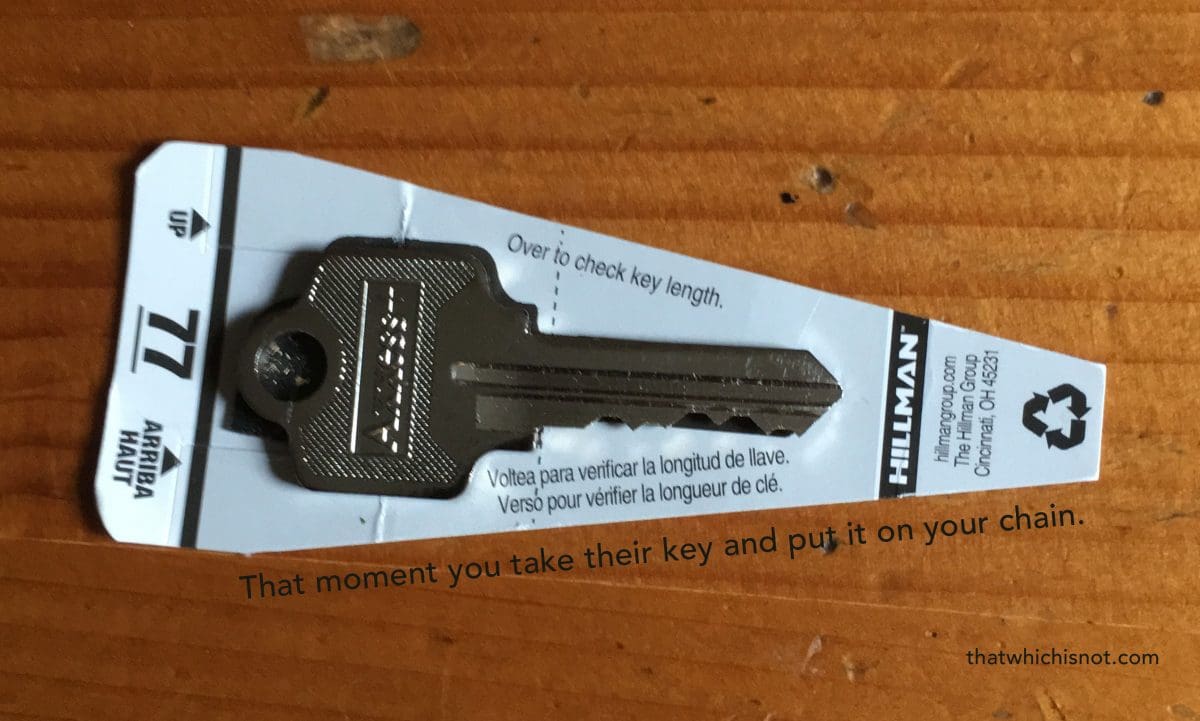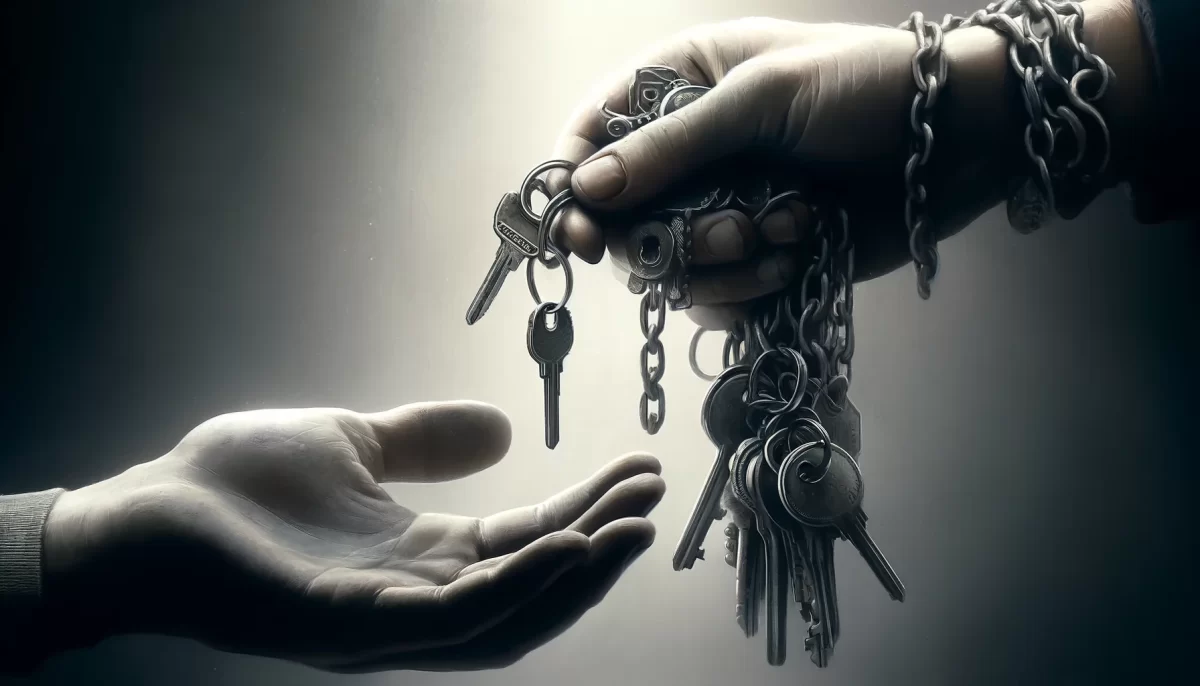
That moment you take their key
and put it on your chain.
There’s a reason they call it a chain,
and why you choose to be on one.
To invest yourself so completely
in that which is beyond your control.
This is key.
6/2
Space Monkey Reflects: The Significance of Shared Keys
The symbolic act of adding someone else’s key to your keychain is a profound gesture of emotional investment and commitment. It signifies not just the sharing of physical space but also an entwining of lives, futures, and perhaps destinies. The term “chain” in this context carries a dual meaning, both as a physical object holding keys and metaphorically as a bond or link that ties individuals together.
Choosing to be on such a chain implies a willingness to connect one’s life with another, acknowledging both the strength and the constraints that come with such a bond. It’s a decision laden with implication, where one invests deeply in something that, by its nature, becomes beyond one’s sole control. This action—voluntarily linking oneself to another through the exchange of keys—is emblematic of a larger commitment to trust and shared paths.
The metaphor of the key as something that unlocks more than just doors, but potential futures and shared experiences, is pivotal. Keys are small yet significant objects that grant access and signify trust, responsibility, and mutual acceptance. When one key joins another on a chain, it symbolizes the union of separate elements into a single narrative, each key a chapter of individual and collective stories.
Moreover, the phrase “This is key” highlights the essential truth about relationships and commitments: they are foundational, unlocking parts of our lives and selves that remain otherwise closed or dormant. The joining of keys is thus not just about physical access but about opening up to new vulnerabilities and possibilities.
In exploring the implications of such a gesture, we delve into the essence of what it means to be interconnected. Each commitment, each shared key, adds weight to our keychain—emotional, psychological, and spiritual. These keys, then, are not just tools but symbols of the trust we place in others and the responsibilities we accept.
Summary
Adding another’s key to one’s keychain symbolizes deep emotional commitment and the intertwining of lives. It represents both the strength and constraints of bonds, emphasizing trust, shared paths, and the unlocking of mutual potentials.
Glossarium
Keychain: A metaphor for the collection of commitments and responsibilities one carries, each key representing different aspects of life’s access and trust.
Chain: Symbolically represents the connections and bonds that link individuals, suggesting both strength and limitation.
“The keys we share are the trusts we bear, each turn in the lock a step together, a future unlocked.” — Space Monkey
In the quiet clink of metal,
keys dance on a chain,
each a promise, a pact,
in the heart’s domain.
One more key joins the chorus,
a gesture small yet profound,
in its teeth, a tale of trust,
in its turn, a future unbound.
Together they swing, the keys of life,
each turn a story, each cut a strife,
on the chain of days, the chain of nights,
they unlock the depths, they ignite the lights.
We are Space Monkey.





























The metaphorical act of taking someone else’s key and putting it on your own chain represents a sense of ownership and responsibility for something outside of your control. It implies a deliberate choice to invest yourself fully in that which you cannot control.
Being on a chain suggests a sense of restriction or limitation, as if you are willingly binding yourself to a particular situation or circumstance. It signifies a willingness to accept the consequences and outcomes that come with it, regardless of the level of control you have over them.
The phrase “To invest yourself so completely in that which is beyond your control” suggests a conscious decision to devote your energy and attention to something that lies outside the realm of your influence. It may reflect a belief in the power of acceptance and surrender, recognizing that there are certain aspects of life that cannot be controlled or changed.
In this context, the key represents a symbolic representation of surrendering the need for control and embracing the acceptance of circumstances as they are. It acknowledges that true freedom may come from releasing the desire to manipulate or dictate outcomes and instead finding contentment and fulfillment in accepting the present moment.